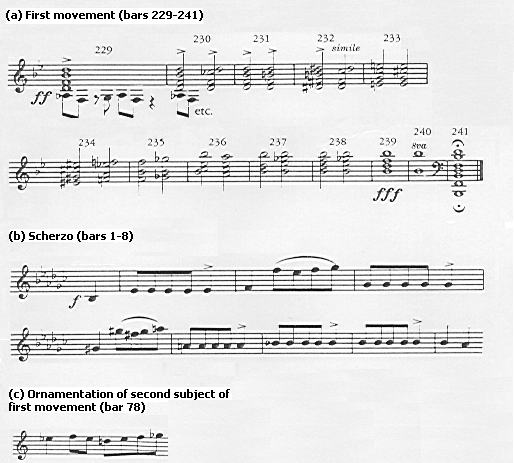Example 15:
Similarity in outline between bars 229-241 of the first movement
and bars 1-8 of the
Scherzo

Réti illustrates that, starting in Example 15(a) with the
D-sharp in bar 232, and in Example 15(b) with the E-flat in bar 1, and
embroidering the line of Example 15(a) with the ornamentation of the second
subject from the first movement (Example 15(c)), the Scherzo theme is revealed.
On the absence of the opening D of the coda of the first movement in the
Scherzo, Réti explains: "As Chopin apparently planned the Scherzo in E-flat,
yet wished to carry over the essential pitch of the concluding group from the
preceding movement, he had almost no alternative to omitting the opening D."
Furthermore, the last melodic note of the first movement is a D; if Chopin did
not feel that this note was important as far as thematic design was concerned,
it is likely that he would have ended the movement on a B flat, the note to
which the